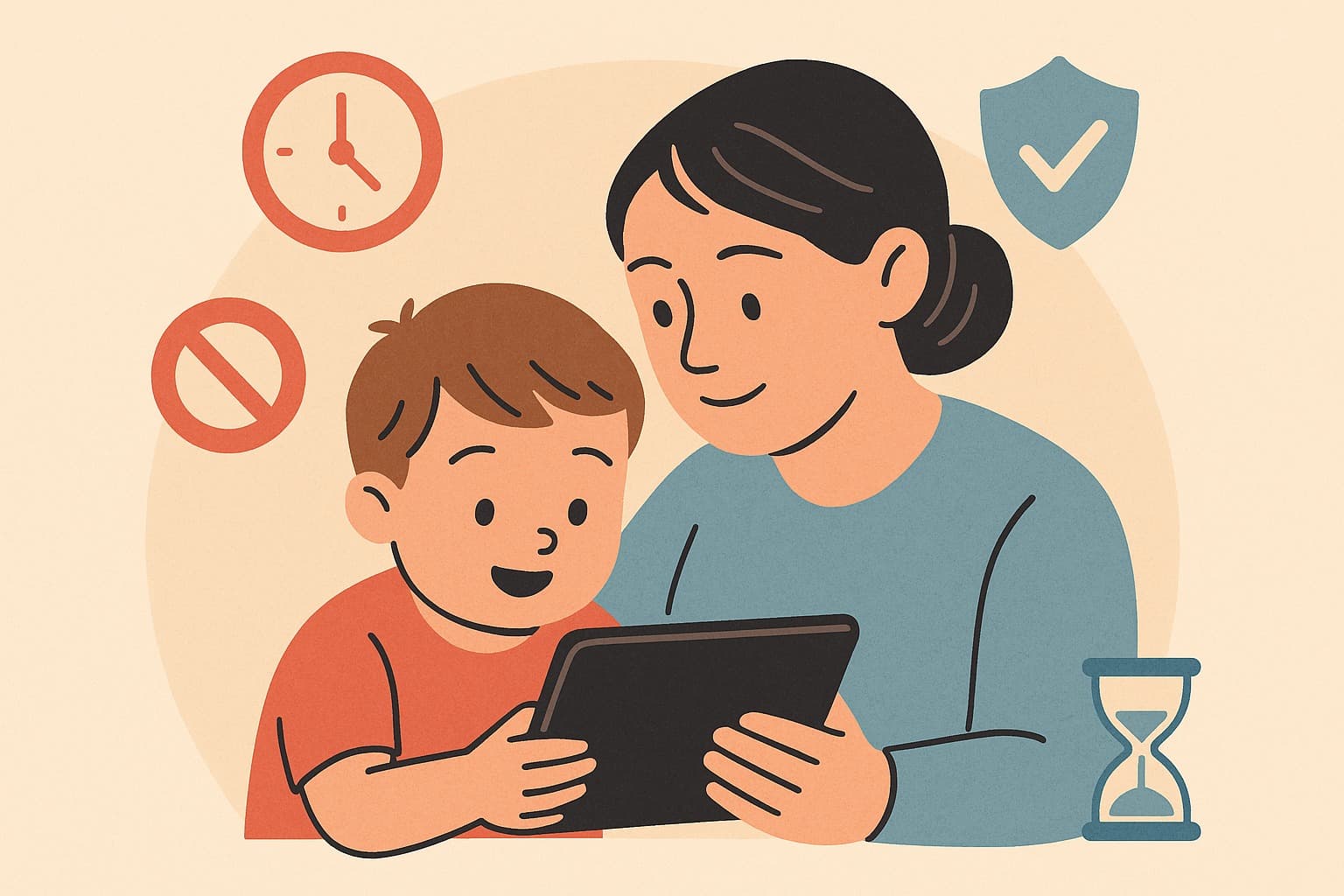
When Should Children Meet Screens, How Should We Start?
One of the most common questions parents ask in today's digital world is: "When should my child start using screens?" This is a crucial question that requires careful consideration of the child's developmental stage, family values, and the quality of digital content available.
Understanding the Right Age
0-2 Years: Screen-Free Foundation
The American Academy of Pediatrics recommends avoiding screen time for children under 18 months, except for video chatting with family members. During this period, children need:
- Face-to-face interactions
- Physical exploration of their environment
- Development of motor skills and language
- Bonding with caregivers
2-5 Years: Limited, High-Quality Content
Between ages 2-5, children can benefit from carefully selected digital content:
- Duration: Maximum 1 hour per day
- Content: Educational, interactive, and age-appropriate
- Supervision: Always with parental guidance
- Balance: Should not replace physical play or social interactions
6+ Years: Guided Digital Exploration
As children enter school age, they can handle more screen time, but with clear guidelines:
- Educational content: Learning apps and programs
- Creative tools: Drawing, music, and storytelling apps
- Social interaction: Supervised communication with family and friends
- Time management: Learning to balance screen time with other activities
How to Start: A Step-by-Step Guide
1. Assess Your Child's Readiness
Before introducing screens, consider:
- Can your child follow simple instructions?
- Does your child show interest in technology?
- Is your child able to transition between activities?
- Does your child have other interests and activities?
2. Choose the Right Content
Start with content that:
- Educational: Teaches new skills or concepts
- Interactive: Requires active participation
- Age-appropriate: Matches your child's developmental level
- Safe: No ads, inappropriate content, or data collection
3. Set Clear Boundaries
Establish rules from the beginning:
- Time limits: Clear start and end times
- Location: Designated areas for screen use
- Content: Pre-approved apps and programs
- Supervision: Always monitor usage, especially initially
4. Model Healthy Behavior
Children learn by example:
- Limit your own screen time
- Show interest in non-digital activities
- Use technology purposefully, not mindlessly
- Demonstrate balanced lifestyle choices
Recommended First Experiences
For 2-3 Year Olds:
- Interactive books: Digital versions of familiar stories
- Simple games: Matching, sorting, and puzzle apps
- Creative tools: Drawing and music apps
- Video calls: Connecting with distant family members
For 4-5 Year Olds:
- Educational apps: Learning letters, numbers, and basic concepts
- Creative platforms: Digital art and storytelling tools
- Simple coding: Age-appropriate programming games
- Virtual field trips: Exploring museums and nature virtually
For 6+ Year Olds:
- Learning platforms: Educational websites and apps
- Creative software: More advanced digital tools
- Communication tools: Supervised messaging and video calls
- Research skills: Learning to find information online safely
Warning Signs to Watch For
Be alert to these red flags:
- Withdrawal symptoms: Irritability when separated from screens
- Neglected activities: Loss of interest in other hobbies
- Sleep problems: Difficulty falling asleep or staying asleep
- Social isolation: Preferring screens over human interaction
- Academic decline: Falling behind in school or other activities
Building Healthy Digital Habits
1. Create a Family Media Plan
- Set clear expectations for all family members
- Establish tech-free zones and times
- Plan alternative activities
- Regular family discussions about digital use
2. Encourage Active Engagement
- Choose interactive content over passive viewing
- Discuss what children are watching or doing
- Ask questions about their digital experiences
- Connect online activities to real-world learning
3. Balance Digital and Physical Activities
- Ensure adequate outdoor time
- Support creative and imaginative play
- Maintain social interactions
- Encourage physical activity and exercise
The Role of Parents
Your involvement is crucial:
- Stay informed: Learn about the apps and content your child uses
- Be present: Supervise and participate in digital activities
- Communicate: Have open discussions about technology use
- Adapt: Adjust rules as your child grows and develops
Conclusion
The key is not to fear technology but to introduce it thoughtfully and purposefully. By starting at the right age with appropriate content and clear boundaries, you can help your child develop a healthy relationship with digital devices that will serve them well throughout their lives.
Remember, every child is different, and what works for one may not work for another. Trust your instincts as a parent, stay informed, and be willing to adjust your approach as your child grows and develops.



